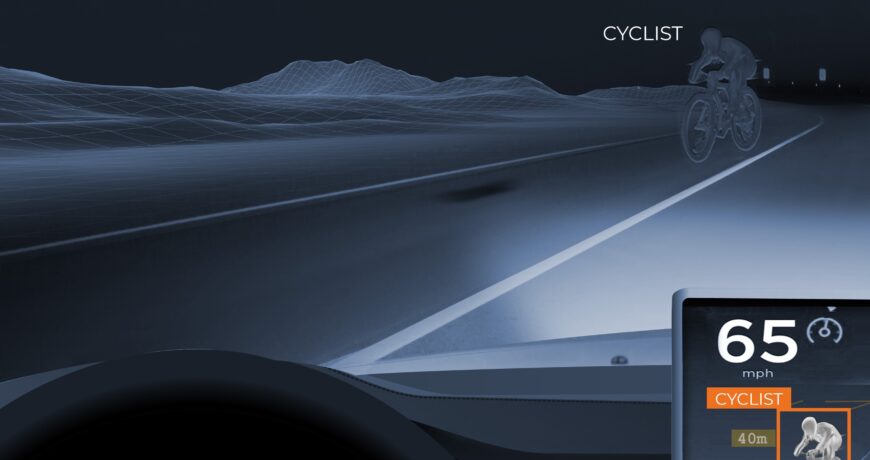[ad_1]
//php echo do_shortcode(‘[responsivevoice_button voice=”US English Male” buttontext=”Listen to Post”]’) ?>
The road is dark, the rain coming down in sheets. Suddenly, two people run onto the pavement, directly in your path. Before you can react, your car automatically slows to a safe stop without a collision. The runners press on, unaware of the danger just passed. To make this safety improvement real, we need cars that can see at night—a rare capability today that is poised, through actions now planned, to become widespread in the next few years.
Since the turn of the millennium, pedestrian injuries and fatalities have been steadily rising around the world, most rapidly at night—a scenario that now accounts for three-quarters of incidents. The rise is generally attributable to a combination of heavier and faster cars, increasing driver distraction and riskier pedestrian behavior.
Highway regulators and insurers have noticed these rising rates, leading to calls for new safety regulations that include equipment that stops cars when pedestrians inject themselves into roadways too closely ahead. Projects to develop cars that drive themselves have produced such equipment, which, when adapted to assist drivers in collision avoidance, promises to reduce pedestrian strikes.
Testing has confirmed these improvements under favorable conditions, but a problem remains: In the dark, in the presence of bright oncoming light or in unfavorable weather, the current systems fail.
Fundamentally, this failure is due to the dependence of the current automobile safety equipment—cameras, radar and LiDAR—on the use of active illumination. These devices all require that the pedestrian be illuminated to be seen.
Recognizing this limitation, regulators around the world have issued mandates that require deployment of pedestrian anti-collision systems capable of operation at night.
Fortunately, there is an alternative to active illumination. For the last 100 years, we have been able to take pictures of differences in radiated heat using cameras initially developed for the military. In these images, anything having even a minuscule temperature difference from the background clearly stands out—heated buildings, operating vehicles and, most significantly, warm bodies.
Visualizing pedestrians on the road may be optimized by imaging long-wave infrared radiation, which provides the largest signal differences in the temperature range hospitable to life.
Unfortunately, for most of the history of thermal imaging, the best images available in this radiation band required complex semiconductor detectors running at cryogenic temperatures.
Cameras using these devices are very expensive and cumbersome, rendering them unsuitable for use in cars. However, in recent years, devices incorporating arrays of small elements that convert temperature change into significant resistance variation have met the image quality requirements needed in automotive applications. Even so, the costs have remained high enough to relegate use of these cameras to luxury cars.
To solve this problem, Owl Autonomous Imaging is attacking the cost and complexity of thermal cameras to ensure that every car can be equipped with systems capable of protecting pedestrians at all times. To accomplish this goal, an automotive nighttime safety camera must do two things: Sort out pedestrians from the background and then determine how far they are from the approaching car.
Any thermal camera can “see” the pedestrians, but we have added the power of artificial intelligence in the form of convolutional neural networks, machine-learning modules trained to distinguish pedestrians from other warm objects and to compute their distances from the camera. This combination works in daylight, even looking into the sun, as well as at night, with no roadway lighting—and day or night in adverse weather conditions.
To meet the cost, performance and configuration requirements of the automotive industry, we developed a high-definition image sensor combining the newest 12-µm microbolometer design with digital acquisition and temperature compensation circuitry directly below the array. This sensor configuration eliminates the need for an external calibration shutter and provides data formatted for connection to automotive computers.
In November, a first version of this system was tested at night in a passenger car. In all 12 test runs, the vehicle successfully stopped before striking a mannequin the size of a child.
The world of automotive safety is rapidly evolving. From the research initially focused on autonomous cars and trucks now comes the advent of safer driving to protect pedestrians, bicyclists, motorcyclists and everyone else moving around vehicles.
Now, throughout the world, governments, insurance companies and automotive industry groups are developing and implementing expanded safety regulations that will lead automobile makers to incorporate nighttime safety technologies. This rare combination of regulation and technological advancement will make our highways and urban streets much safer.
[ad_2]
Source link


